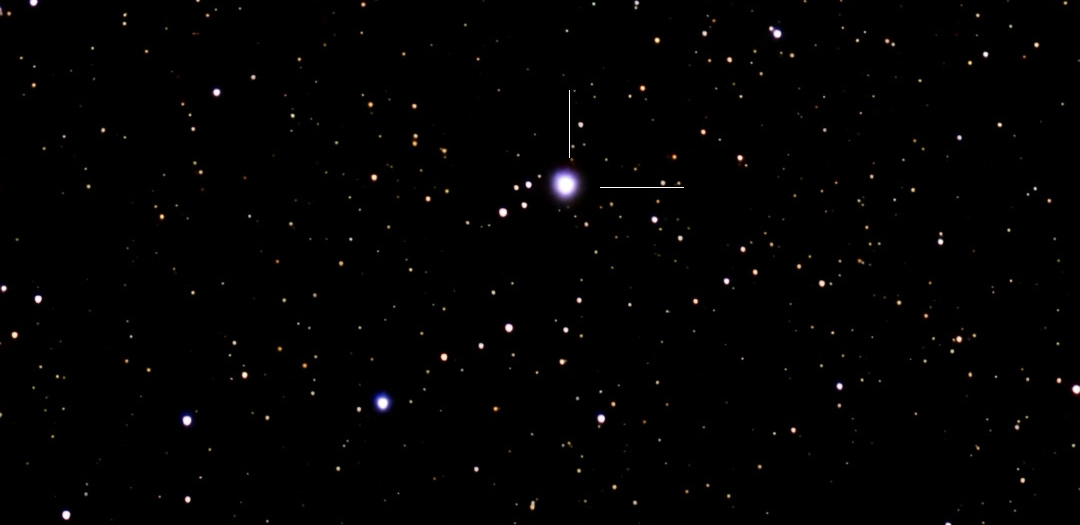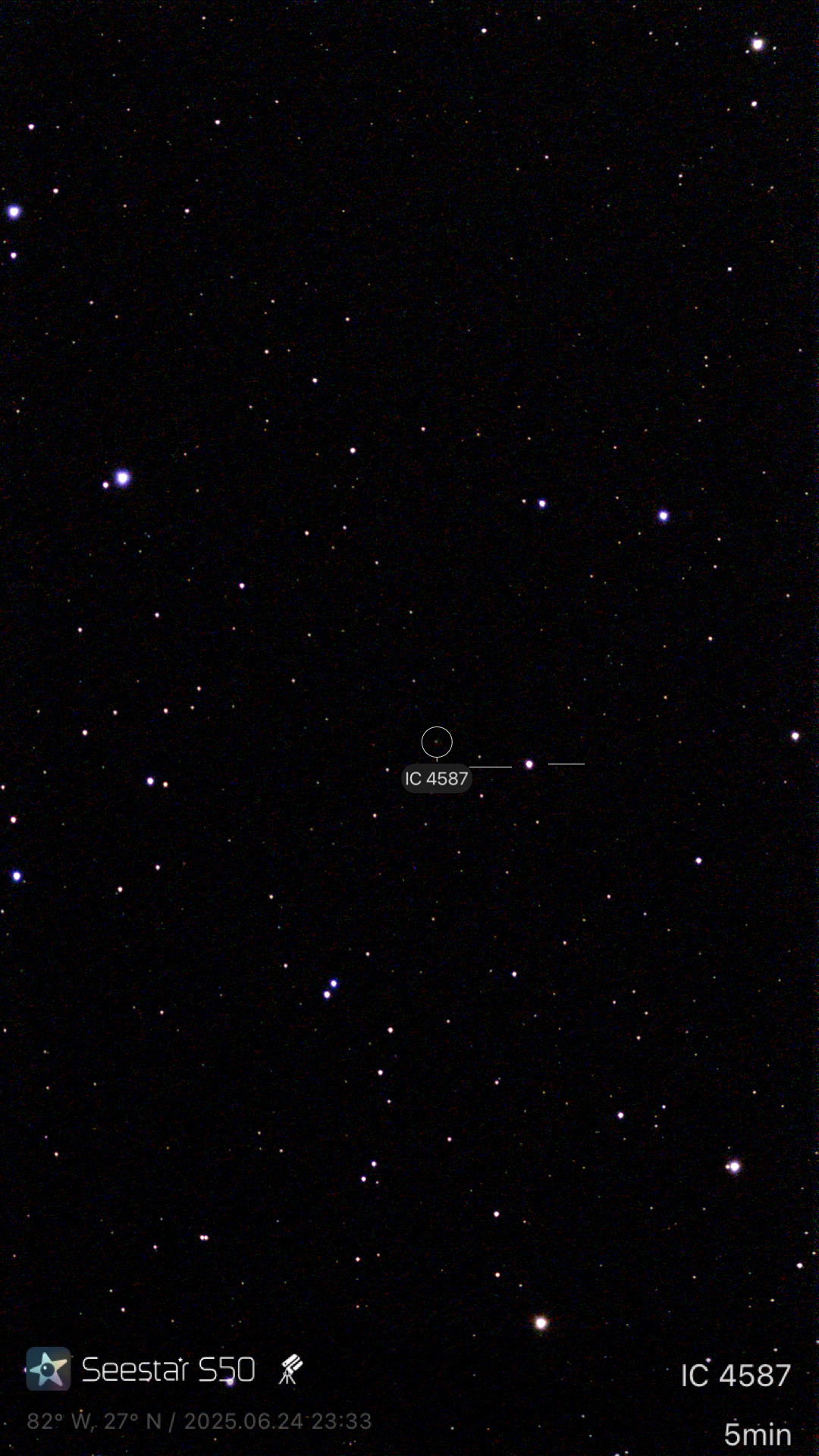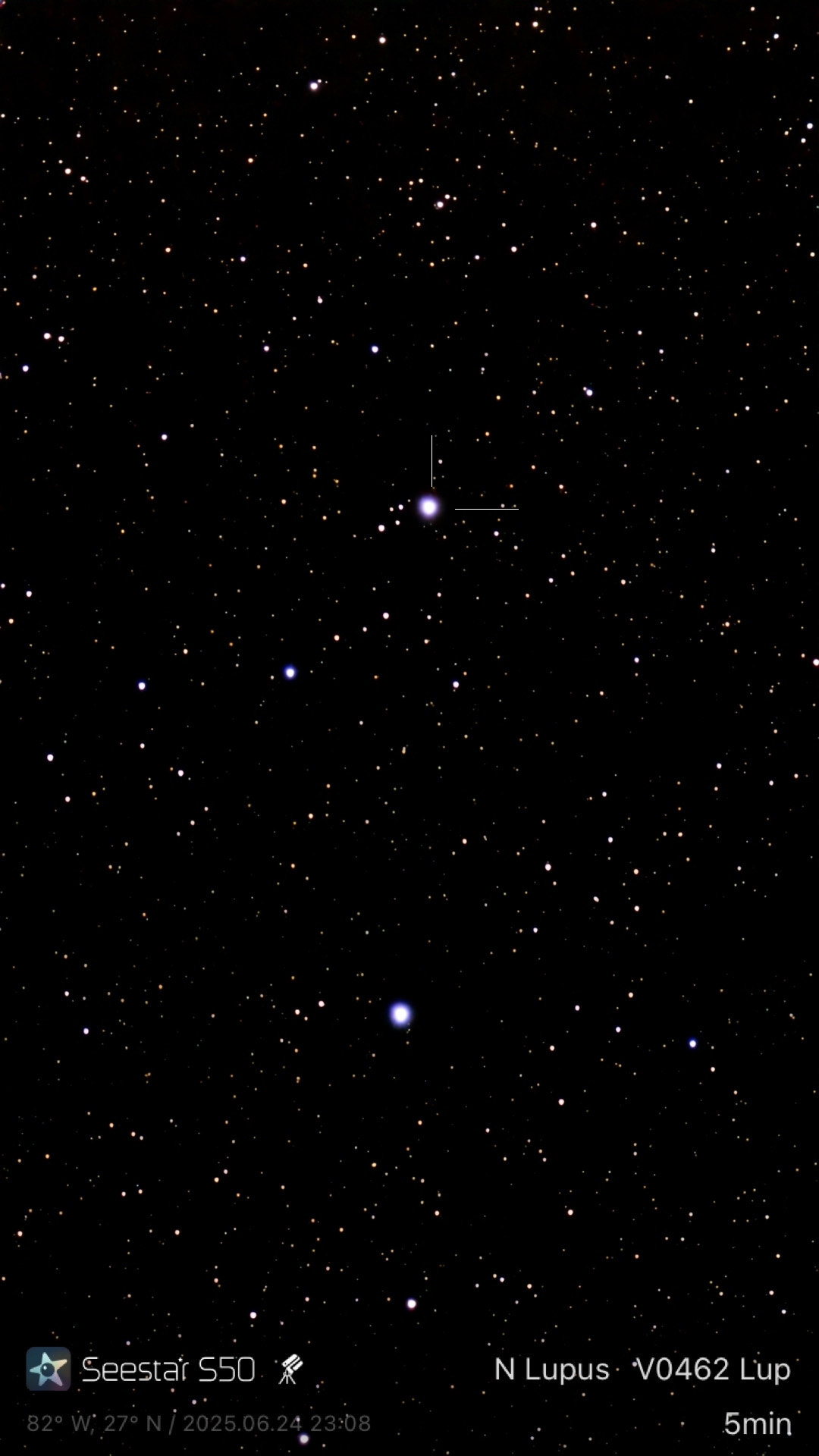
V462 Lupi When the Universe Gives You Lemons – Make Lupi-nade
July 2025 :
T Coronae Borealis, abbreviated T CrB, also known as the “Blaze Star” is a recurrent nova which last brightened in 1946. Professional astronomers predicted it would brighten again by September 2024. As of mid-2025, T CrB has not yet gone nova but when it does happen, its apparent brightness is predicted to be naked eye at magnitude +2.
T Coronae Borealis is a classical nova involving a white dwarf accreting hydrogen rich material from a companion star usually a red giant. The accreted hydrogen builds up and leads to a thermonuclear explosion that results in the sudden brightness of the star. The white dwarf is not destroyed in the process.
While waiting for the Blaze Star to brighten, another nova occurred that took astronomers by surprise. The new nova was detected in the constellation Lupus the wolf. Therefore, when the universe gives you lemons- make LUP-enade.
Nova Lupi 2025 officially designated V462 Lupi was first discovered on June 12, 2025, by the All-Sky Automated Survey for Supernovae, a network of 20 worldwide robotic telescopes. When Nova Lupi 2025 was first detected to outburst, it was +8.7 magnitude and has since rapidly brightened to +5.7 magnitude, which is on the verge of naked eye visibility. This star is normally at magnitude +22.3 and therefore brightened by 3.3 million times! Since this is its first recorded eruption, it is unknown how long V462 Lupi will be visible to the naked eye. It could take from a few days to a few months to dim from its previous level. V462 Lupi was determined to be a classical nova just like T CrB.
Observers from a latitude around 40 degrees North will find Nova Lupi 2025 low in the sky at approximately 10 degrees above the southern horizon at around 10:30 p.m. local time. The further south you are the nova will appear higher in the sky. From the Florida Keys V462 Lupi will be 25 degrees above the southern horizon. Therefore, the best way to view the nova is on a clear night with an unobstructed view down to the horizon. The coordinates for V462 Lupi are RA 15h 08m 03.27” and DEC -40º 08’ 35.1”. Simply input these coordinates into your Go To telescope and the nova will be centered in the field of view.
This was my first observation of a nova. I was surprised how bright the star appeared in my Seestar S50 smart telescope. I will be monitoring and imaging this star throughout the coming months as it begins to fade. I encourage all amateur astronomers to attempt an observation/image of this once in a lifetime event. Consider submitting your observations to the American Association of Variable Star Observers (AAVSO).

Image of T Coronae Borealis on June 24, 2025 at 11:33pm local time or June 25, 2025 3h 33m Universal Time near the zenith. The skies were moonless, clear, and hazy at Bortle 6. The easiest way to find T CrB in the Seestar is to input the elliptical galaxy IC4587 at mag +14.3. The Blaze Star will be the nearest bright star to the galaxy at approximately +10 magnitude. Image is the result of 10 second exposures totaling 5 minutes in equatorial mode. Straight out of the Seestar with no post processing. Image was taken by the author from Longboat Key (Sarasota), Florida T CrB has yet to go nova.

Image of V462 Lupi taken on June 24, 2025 at 11:08pm local time or June 25, 2025 at 3h 08m Universal Time. The skies were moonless, clear and hazy right down to the horizon at Bortle 6. The nova was 22 degrees above the horizon at this time. The bright star at the bottom center of the image is HR Lupi which is at magnitude +5.8. Note that the Nova Lupus is approximately the same magnitude. Image is the result of 10 second exposures totaling 5 minutes in equatorial mode. Straight out of the Seestar with no post processing. The image was taken by the author from Longboat Key (Sarasota), Florida. Note that V0462 Lup in the watermark is officially V462 Lupi.
References:
1) When T Coronae Borealis, the Blaze Star ignites, it could become as bright as the North Star by Ezzy Pearson & Chris Lintott June 23, 2025 BBC The Sky at Night Magazine
https://www.skyatnightmagazine.com/space-science/t-coronae-borealis-nova
2) Bright Nova Lights Up Lupus Constellation | Sky & Telescope Bob King | June 17, 2025
https://skyandtelescope.org/astronomy-news/bright-nova-lights-up-lupus/
3) A ‘new star’ has exploded into the night sky- and you can see it from North America by Harry Baker June 19, 2025 | LiveScience.com
4) A “New Star” Suddenly Got 3 Million Times Brighter- How to See It by Jamie Carter June 24, 2025
5) A Star Exploded in the Lupus constellation. Here’s how to see the nova in the night sky this month | Anthony Wood | June 26, 2025 | Space.com
6) Nova V462 in Lupus, an Astronomical Event not to be Missed
https://theskylive.com/articles/2025/06/nova-v462-in-lupus
7) V462 Lupi | Wikipedia.org
https://en.wikipedia.org/wiki/V462_Lupi
8) AAVSO published observations of magnitudes for Nova V462 Lupi
https://apps.aavso.org/webobs/results/?star=000-BQF-448&num_results=200
9) Special thanks to Russell Pinizzotto PhD President of the Southern Maine Astronomers for his valuable assistance in identifying the nova against the background stars in my Seestar image.
https://www.southernmaineastronomers.org/



